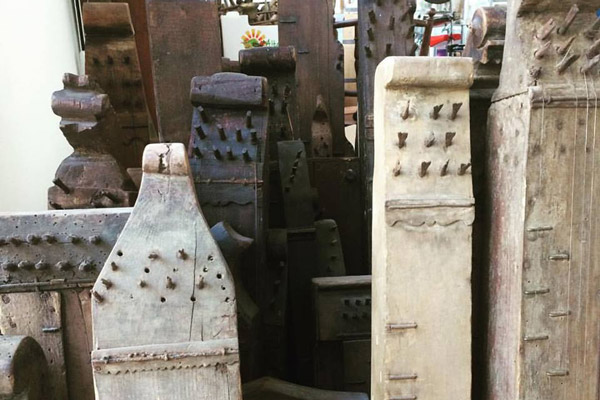
The collection of the Leskowsky Instrument Collection is the largest collection of instruments in Hungary that can be visited, including folk, classical, experimental and completely unique instruments. The strength of the collection lies in its diversity, both in terms of instrument classification and geographical distribution. In addition, an extraordinary feature of the instrument collection is that most of the instruments on display are working, playable pieces that visitors can try out.
Our collection is very important in giving visitors a hands-on experience of the wonderful world of musical instruments and the diversity of human culture through them. It was in this spirit that Albert Leskowsky founded his museum.
His collection of early pieces from Germany was followed by those from the Southern Plain. A significant number of tamburas dating from the 1800s can be heard and seen in the Leskowsky Instrument Collection. In addition, Austrian, German, English, American, Finnish and experimental zithers are on display, as well as works of art that the artist dreamed up for the zither.
Besides the zithers, Leskowsky also started collecting other Hungarian folk instruments.Numerous Hungarian folk flutes from almost every region, tárogatók, dozens of bowed and cimbalom instruments, folk violins, folk children's toys, ketchup bowls, tambourines enrich our exhibition of the work of Hungarian folk instrument makers. The oldest Hungarian folk instruments date from the early 1800s (citeras and flutes), while the youngest are from the present day. Many of our Hungarian folk instruments are in such a state that they can be played by anyone.
Besides Hungarian folk instruments, we also have a significant international collection. Wind, percussion and stringed instruments from Europe, Asia and Africa enrich the collection. Most of these instruments were acquired by Albert Leskowsky during his personal travels, but there are also pieces that were donated to the collection. Dombra, tapsur, tar, sarangi, nickel harp, hardangerfiddle... Just some of the names of our foreign instruments.
Albert Leskowsky not only collected instruments, he was also their inventor. He developed several experimental instruments and created several works of art that sounded, which were either sounding sculptures or paintings. His experimental instruments have been featured in Japanese and American music magazines, and his albums of experimental music have been published in journals in New York, one of the bastions of experimental music. Many of these instruments are on display at the Studio, where they serve not only as instruments but also as extravagant-looking furnishings.
The Leskowsky Instrument Collection also exhibits several instrument collections that are not from Albert Leskowsky. For many years, the International Ceramics Studio has hosted the "Sound of the Clay" symposium, led by Mariann Bán. The artist maintained a very good relationship with the Instrument Collection until her death. In 2013, she donated her unique collection of pottery whistles to us. This collection of 216 pieces is made up of pieces collected by Mariann Bán from all over the world. They include works of art, children's toys and pieces used for sacred purposes.
In addition to Bán's collection, another significant material is the collection of Peter Vladimir's peasant violin. These instruments were made by musicians who were not master instrument makers, but who tried to copy the master instruments to satisfy their musical needs. They are characterised by a variety of shapes and materials.
It may take several personal visits to see the Leskowsky Collection in its entirety. Should you wish to visit the collection for research purposes, our staff will be happy to assist you. It is advisable to make an appointment before your visit so that we can provide you with as much information as possible about the instruments you are interested in.